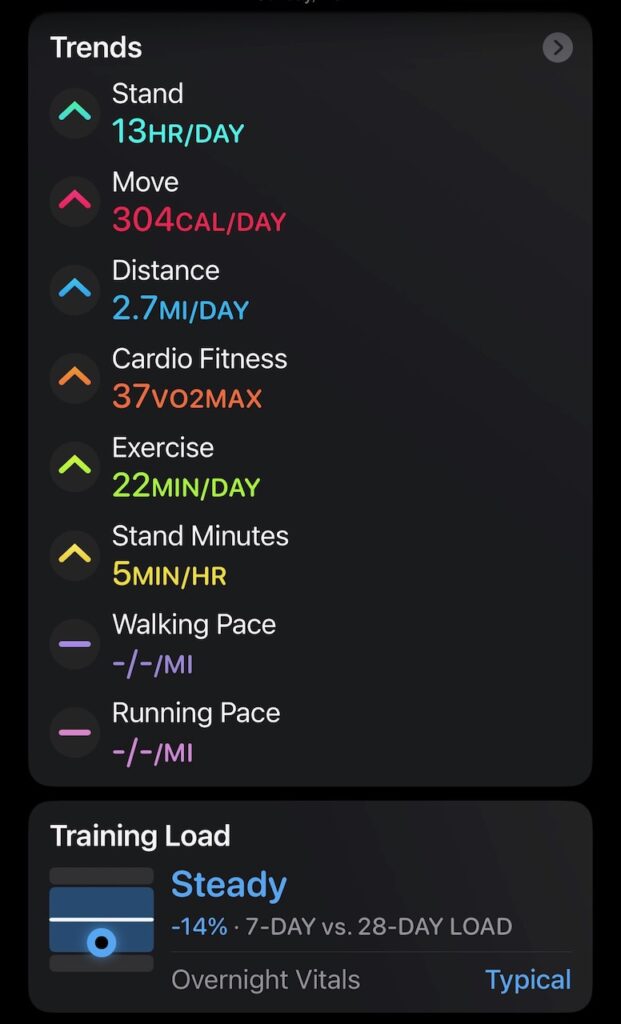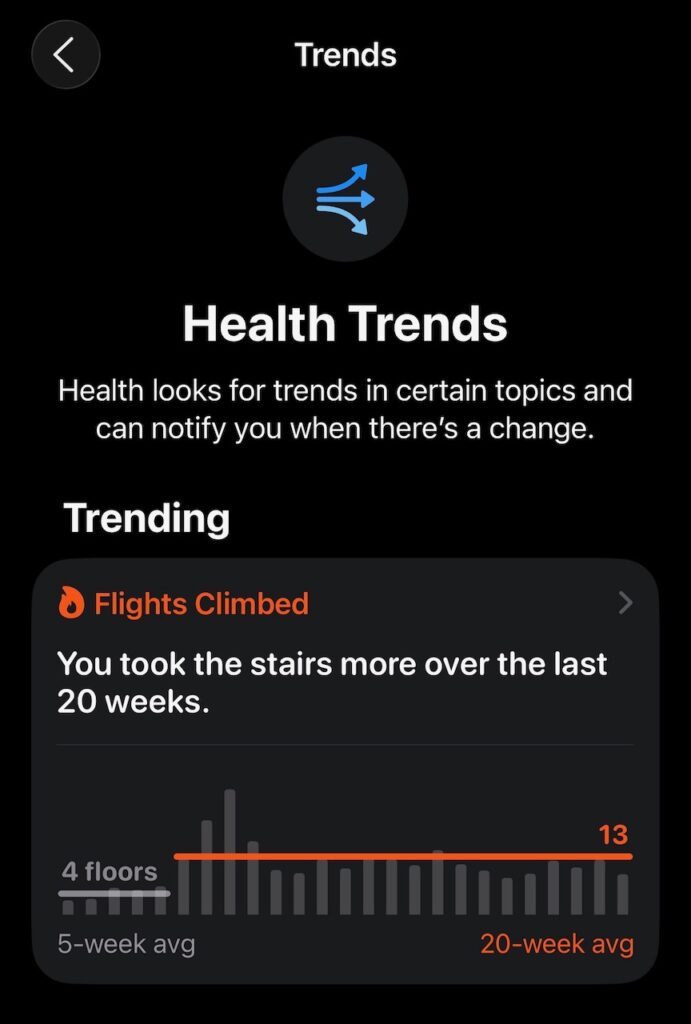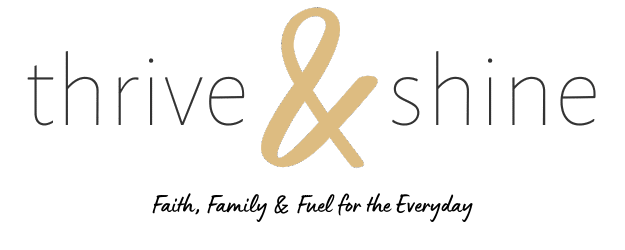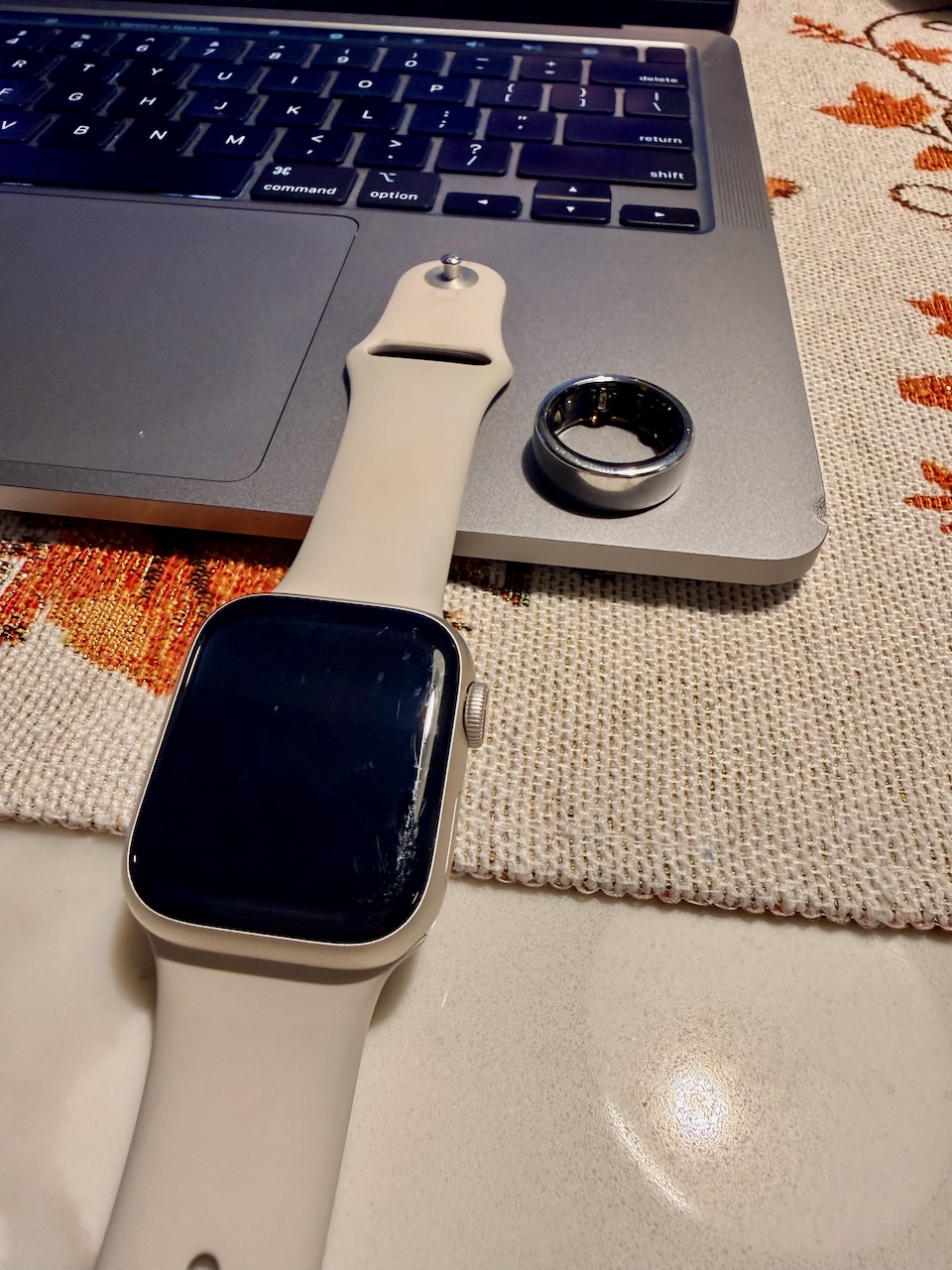How Oura Ring and Apple Watch Shape My Health Journey
For the last 10ish years, I’ve become more interested in how my daily choices impact my long-term health. It’s not simply about what I eat or how many steps I take. It’s about how my habits stack up over time. For me, tracking isn’t about perfection; it’s about longevity. I want to know how my heart, recovery, sleep and movement patterns are trending so I can spot when I’m not prioritizing my health before it becomes a problem.
That curiosity led me to wearing both an Oura Ring and an Apple Watch — one device many, many of us wear and the other that I get many, many questions about. So I figured I’d offer a little perspective on how both serve slightly different purposes in my life.
The Oura Ring: Quiet Consistency
I won my Oura Ring (Gen 3) and a 12-month subscription almost two years ago through my Precision Nutrition certification, and I’ve worn it nearly every day since. The best part? Battery life. I can go several days without charging, which means I get more consistent sleep and recovery data. And since I received mine Oura has launched the 4th generation ring that they’re advertising 5-8 days between charges!
The Oura app is also beautifully designed for reflection. You can tag your day or app insights (such as my “hey stressball!” check in below) with things like caffeine intake, stress levels, or late meals — and over time, start to connect the dots. While it hasn’t changed my behavior directly, it would be powerful for someone who likes tracing root causes or understanding patterns behind energy dips and sleep quality.


My biggest frustration: the design isn’t ideal for lifting weights or doing more hands-on workouts. It’s sleek, but not invincible. Good news though, I recently discovered these silicone covers. I have no idea if they work or not but seems Amazon has a solution for everything!
The Apple Watch: Everyday Functionality
I’ve worn an Apple Watch for over a decade now, and it’s still my go-to for daily movement tracking. It’s integrated into everything — reminders, messages, workouts, even payments. And given the note above about how I can’t use the Oura Ring while lifting, my Apple Watch is my primary fitness tracker. I rely on it for training data and heart rate.
The downside is battery life. I have an older Series 8 so have to charge it often, which sometimes means losing out on sleep tracking or segments of my day where I forget that I’ve left it on the charger in another room. But the convenience and native integration with Apple Health & Fitness make it a powerful hub for all my data. My Oura Ring data syncs right into my Apple ecosystem but not the other way around.


Today I noticed an interesting discrepancy though: my Oura Ring logs more steps per day than my Apple Watch (today the difference is about 1,200 steps). No way to really know which one is “accurate” but it’s a good reminder that no device is perfect, and the real insight isn’t the exact number — it’s the trend.
Cost Comparison: What You Pay, What You Get
Price Comparison
- Apple Watch Series 11 – starts at $399 in the U.S. and goes up from there. If you don’t buy (and activate) the cellular-enabled version you can get away with one hardware buy and you’re done.
- Oura Ring 4 – starts at $349 with the new and colorful ceramic edition pushing up to $499 in the U.S.
You can use the Ring without paying for the monthly subscription fee but to unlock deeper insights (as I mentioned above) you’ll have to pay $5.99/month.- GET 10% off on the Oura Ring Gen 4 ceramic here: discount link – no kickback for me, just savings for you!
What I’ve Learned from Wearing Both
Using both devices has reinforced something I’ve come to believe deeply: data is only as useful as the perspective you bring to it.
I’m not tracking to hit arbitrary numbers. I’m tracking to stay aware — to make sure I’m not slipping into habits that push my health to the bottom of the list. These devices help me see when my sleep consistency is falling off, or when my training volume is trending down. It’s not judgment — just gentle accountability.
If you’re someone who loves data, reflection, and subtle nudges toward better habits, the Oura Ring might be your perfect match. If you value day-to-day functionality and quick checks on your heart rate, the Apple Watch will likely stay your constant companion.
Takeaway
Health tracking isn’t about controlling every variable — it’s about noticing the patterns that tell your story over time. And if that story helps you make more intentional choices for your future health and longevity, then every data point is worth it. At the end of the day, I won’t pay for another Oura Ring when/if mine breaks. I have plenty of other things I’d rather spend $400 on…primarily a trip to Costco (LOL).
Hope this helps a little. What questions does this leave you with? Drop me a comment below.


